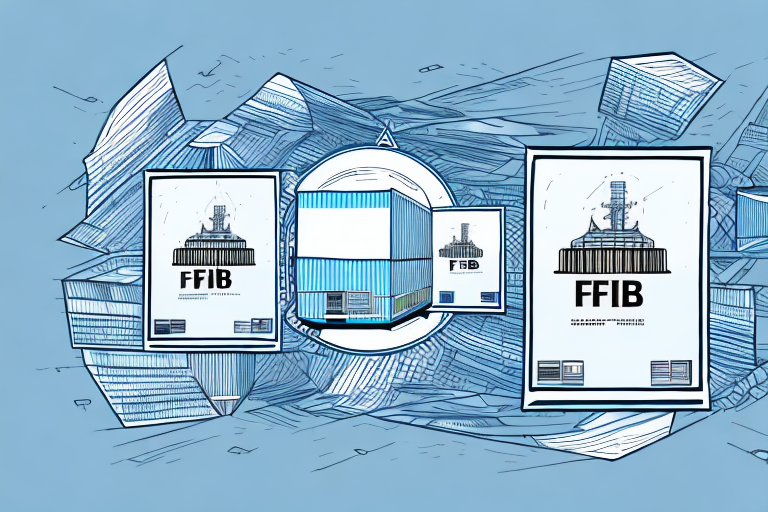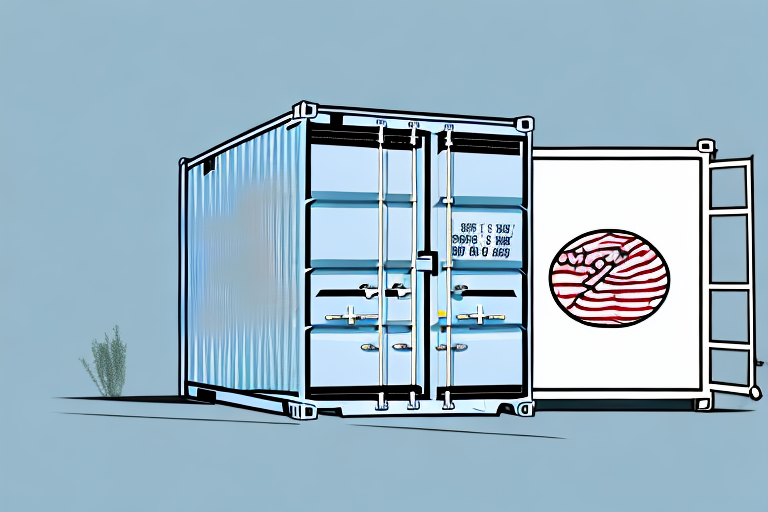Finding the Perfect FOB Location for Your Business
As a business owner, finding the perfect FOB (Forward Operating Base) location can be a daunting task. The FOB location is essential to the success of any business, as it determines the accessibility and visibility of your business to your customers. In this article, we will discuss the importance of an ideal FOB location for business success, the key factors to consider when choosing one, and the strategies you can adopt to promote and market your business in a new FOB location.
Understanding the Importance of FOB Location for Business Success
Choosing the right FOB location is the first crucial step toward achieving success in your business. The FOB location determines the degree of exposure your business gets, its accessibility to customers, and the ease of doing business. A well-located FOB can increase foot traffic, help build customer relationships, and boost sales. Conversely, a poorly located FOB can lead to low customer traffic, restricted visibility, and decreased sales figures. Therefore, it is imperative to choose the right FOB location with care.
One important factor to consider when choosing an FOB location is the proximity to your suppliers. If your suppliers are located far from your FOB, it can lead to delays in receiving goods and increased transportation costs. On the other hand, if your FOB is located close to your suppliers, it can result in faster delivery times and lower transportation costs, which ultimately benefits your business.
Another factor to consider is the level of competition in the area. If there are already several businesses offering similar products or services in the same location, it can be challenging to stand out and attract customers. However, choosing an FOB location in an area with little to no competition can provide your business with a competitive advantage and increase your chances of success.
Key Factors to Consider When Choosing an Ideal FOB Location
Target Customers and Demographics
Before selecting an FOB location, consider your target customers and their needs. Analyzing the demographics of a potential location is essential. Understanding factors such as age, income, and occupation can help you determine if the area aligns with your target market. Additionally, assessing the local culture and habits ensures that your business fits seamlessly into the community.
Accessibility and Proximity to Key Resources
Accessibility is crucial for both customers and suppliers. Choose a location that is conveniently accessible, ideally near transportation hubs like highways, ports, or airports. Proximity to essential resources, including utilities and suppliers, can enhance operational efficiency and reduce costs.
Competition and Market Demand
Evaluate the competition and market demand in the area. A location with high demand for your product or service but low competition offers significant growth opportunities. Researching market trends and consumer behavior can provide insights into the viability of your business in the chosen location.
Cost-Benefit Analysis
Conduct a thorough cost-benefit analysis of different locations. Consider factors such as rent or lease costs, utilities, taxes, and other operational expenses. Compare these costs against the potential revenue to determine which location offers the best return on investment.
Local Regulations and Labor Market
Understanding local regulations, zoning laws, and licensing requirements is essential to avoid legal complications. Additionally, assess the local labor market to ensure the availability of skilled workers necessary for your business operations.
Analyzing the Demographics of a Potential FOB Location
Analyzing the population and demographic characteristics of the location, including age, income, and occupation, is crucial to determine if they match your target customers. Assessing the local culture and habits ensures that your business aligns with the community’s preferences.
Another important aspect is the level of education in the area. If your business requires a highly skilled workforce, choosing a location with a higher percentage of college-educated residents is beneficial. Conversely, if your business caters to a blue-collar workforce, a location with residents holding vocational training or trade skills may be more suitable.
Additionally, consider the diversity of the population. If your business targets a specific ethnic or cultural group, selecting a location with a higher percentage of residents from that group can enhance your market reach. For more general businesses, a diverse population can offer a broader customer base.
Evaluating Accessibility and Proximity to Key Resources in a FOB Location
The accessibility and proximity of a location to key resources such as transportation hubs, suppliers, and utilities significantly impact your business's profitability. Choose a location that is easy to access and has reliable access to essential resources like power and water. Proximity to suppliers can reduce transportation costs and lead to faster delivery times.
Infrastructure quality, including roads and highways, also plays a critical role in ensuring smooth operations. Good infrastructure facilitates the easy movement of goods and services, enhancing overall business efficiency.
Moreover, the availability of skilled labor in the area is vital. A location with a pool of qualified workers can save time and resources on training and recruitment, ensuring that your business operates smoothly.
Assessing Competition and Market Demand in a FOB Location
Evaluating the competition and market demand in a potential location helps gauge the feasibility of your business idea in that area. Look for a location with high demand for your product or service but limited competition. This balance allows you to capitalize on existing demand without contending heavily with competitors.
Market demand can fluctuate seasonally. For instance, a beachside location may experience high demand for ice cream during the summer months but see a decline in the winter. Understanding these patterns enables you to adjust your business strategies accordingly.
Additionally, competition can evolve over time as new businesses enter the market or existing ones close down. Regularly reassessing the competition and market demand helps you stay informed and make strategic decisions to maintain your business’s competitive edge.
Determining the Cost-Benefit Analysis of Different FOB Locations
A cost-benefit analysis helps you choose a location that offers the most benefits at the optimal price point. Evaluate factors such as rent or lease costs, utilities, taxes, and other operational expenses in different locations. Compare these costs against the expected revenue to determine which location provides the best financial advantage for your business.
Accessibility is another critical factor in the cost-benefit analysis. A location that is easily accessible to customers and suppliers can reduce transportation costs and improve operational efficiency, contributing to higher profitability.
Furthermore, consider the local market dynamics. A location in close proximity to competitors may make it challenging to attract customers and differentiate your business. Conversely, an underserved market can offer significant growth opportunities and enhance your business’s potential for success.
Securing Necessary Permits and Licenses for Operating in a FOB Location
Before operating your business in a new FOB location, ensure you have all the necessary permits and licenses. These may include zoning permits, building permits, health department permits, and business licenses required by state or local governments.
Contact local government offices, such as the building permit office or the county clerk's office, to verify compliance with all regulatory requirements. Securing the appropriate permits and licenses is crucial to legally operate your business and avoid potential fines or closures.
The Role of Technology in Enhancing Security and Efficiency in a FOB Location
Utilizing technology can significantly enhance the security and efficiency of your FOB location. Implementing surveillance cameras and alarm systems can deter theft and vandalism, ensuring the safety of your premises and assets.
Adopting cloud-based business management software for tasks such as inventory management, job scheduling, and billing can streamline your operations. These tools not only increase efficiency but also provide valuable data insights to inform strategic decisions.
Additionally, investing in advanced point-of-sale systems and customer relationship management (CRM) software can improve customer interactions and enhance overall business performance.
Strategies for Marketing and Promoting Your Business in a New FOB Location
Effective marketing and promotion are critical to achieving success in your new FOB location. Develop a comprehensive marketing plan that outlines specific goals, tactics, and timelines tailored to your target audience.
Leverage social media platforms such as Facebook, Twitter, and Instagram to reach out to potential customers. These platforms offer cost-effective ways to engage with your audience and build a strong online presence.
Consider sponsoring local events, supporting charities, and creating a referral program to attract new customers and foster community goodwill. Additionally, using visually appealing and creative signage can make your business stand out and grab the attention of passersby.
Building Strong Relationships with Local Communities and Partnerships in a FOB Location
Building strong relationships with local communities and forming strategic partnerships can help establish your presence in a new FOB location. Networking with other local business owners and organizations can lead to collaborative opportunities that enhance your visibility and sales.
Participate in community events such as fairs and festivals to engage with potential customers and build trust within the community. Additionally, leveraging referrals from local organizations can help promote your business and attract a loyal customer base.
Conclusion
Choosing the perfect FOB location for your business requires a careful analysis of several factors, including accessibility, proximity to key resources, demographics, competition, and cost-benefit considerations. Conducting thorough research, securing necessary permits, and utilizing technology can enhance your operational efficiency and security.
Developing a robust marketing plan, networking with local businesses, and building strong relationships within the community are essential strategies for establishing a successful presence in your new FOB location. By meticulously evaluating these factors and implementing strategic initiatives, you can position your business for sustained growth and success.






















